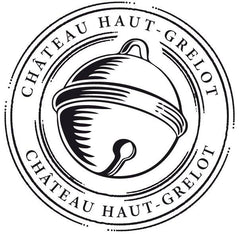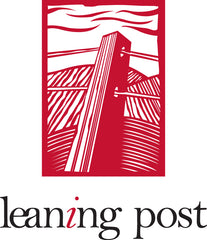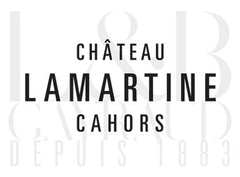580 products

- White Wine
- Glera
- Sustainable, Vegan-Friendly
- Dry
- Residual Sugar: 13.00 g/l
- Light Bodied
- 750ml
- 11.50% alc./vol
Press Reviews
Decanter Magazine
95 Points - Michelle Cherutti-Kowal MW, Stefan Neumann MS, Matt Walls (Tasting Panel)
Fragrant aromas of lemon curd with dried petals, bubblegum and jelly sweet notes over chalky undertones. Silky and seductive on the palate with a floral character and zesty acidity, ending in a steely finish. Drinking window: 2022-2025.
- Red Wine
- Nebbiolo
- Sustainable
- Dry
- Residual Sugar: 2.00 g/l
- Full Bodied
- 750ml
- 14.00% alc./vol
Press Reviews
Vinous Media
96 Points - Antonio Galloni
The 2010 Barolo Riserva Bussia from Pianpolvere Soprano is a flat out stunner. It is also the first Barolo I've tasted under Rocche dei Manzoni's stuartship of this historic Monforte estate that takes me back to the wines of Ferruccio Fenocchio prior to his passing. Rose petal, mint, kirsh, spice and blood orange are some of the many notes that shape this exquisite, classically translucent Barolo. Medium in body and supremely refined, the 2010 is utterly beguiling. I can't wait to taste it with bottle age.
- Red Wine
- Tempranillo
- Sustainable
- Dry
- Residual Sugar: 2.00 g/l
- Full Bodied
- 750ml
- 14.50% alc./vol
Press Reviews
James Suckling
93 Points - Zekun Shuai, Senior Editor
Fine oak spices and cocoa powder to the ripe cherries, cassis, black cherries and warm stones. Full-bodied and polished on the palate with tightly wound tannins that seep through the compact fruit. Good balance between tight structure and fruit density. From organically grown grapes. Drinkable now, but better from 2024.
- Red Wine
- Tempranillo
- Sustainable
- Dry
- Residual Sugar: 2.00 g/l
- 750ml
- 14.50% alc./vol
About the Winery
Bideona

Bideona owns or manages over 300 parcels of extraordinary vines in villages throughout the Rioja Alavesa, the coolest, smallest and most Atlantic sub-zone of Spain’s most famous wine region.
The vineyards of the Rioja Alavesa are defined by parcels of old bush vines planted on terraces or hillside slopes with a high percentage of limestone. Located in the foothills of the Sierra Cantabria, Bideona’s vines have an average age of 50 years and many were planted in the 1920s, 30s and 40s, before high-yielding clones became available.
Bideona puts the focus firmly on terroir by making each wine in its Vino de Pueblo range as a field blend of Tempranillo and other native varieties from plots in an individual village. Each is named with an acronym – L3Z4 for Leza, L4GD4 for Laguardia, S4MG0 for Samaniego and V1BN4 for Villabuena – owing to DOCa Rioja regulations that only allow village names to be marked if both the winery and the vineyard are in the same location.
“Bideona’s reason for existence is to make wines that show the personality of the Rioja Alavesa and its historic wine villages” states company co-founder and director, Andreas Kubach MW. “We have access to a wealth of diverse plant material in our parcels of old vines, which we believe contributes to the complexity of the wines as well as the differences between villages.”
Press Reviews
Vinous Media
94 Points - Joaquín Hidalgo
The 2020 L4GD4 Viñas Viejas is 100% Tempranillo sourced from Laguardia, Rioja Alavesa. Aged in concrete vats and foudres, this cherry-red wine reveals ripe balsamic notes alongside herbs and black fruits. Dry and silky, with fine-grained tannins, it features a vibrant, refreshing core and a mouthwatering, energetic finish. This is a unique, flavorful, primary Rioja. Also of note, its clever, elusive name subtly alludes to the place without explicitly mentioning it, adhering to the labeling regulations in Rioja. Drinking window: 2024-2040.
- Red Wine
- Grenache, Syrah
- Sustainable
- Dry
- Residual Sugar: 5.00 g/l
- 750ml
- 14.00% alc./vol
About the Winery
Domaine Autrand

Christine Aubert and her son Aurélien, wine-makers in Vinsobres, at the heart of the Drôme Provençale, welcome you to their family estate. As a 80Ha estate, the Autrand Wine Cellar produces AOC Vinsobres (Côtes du Rhône vintage since 2006), Côtes du Rhône Villages AOC and Côtes du Rhône AOC in each color. Vinsobres, another little known Southern Rhône commune was awarded 'Cru' status in 2006. It’s relative anonymity outside France ensures exceptional value.
Press Reviews
Decanter World Wine Awards
90 Points
80% Grenache, 20% Syrah. Herbal, liquorice and ripe berry nose. Full-bodied style with some enjoyable dense tannins and good acidity.
- Sparkling Wine, White Wine
- Sémillon
- Sustainable, Vegan-Friendly
- Dry
- Light Bodied
- 750ml
- 12.50% alc./vol
About the Winery
Château Haut-Grelot

Château Haut Grelot is located in Saint Ciers Sur Gironde, approximately 50 kms north of Bordeaux, on the right bank of the Gironde Estuary. It was established by the Bonneau family in 1922 and now run but the 4th Generation. Today Château Haut-Grelot comprises 58 hectares of vineyards and is run by Céline and Julien, who was recently awarded the title 'Best Young Talent' in Bordeaux.
The vineyards are made up of sandy-gravel on the hillsides bordering the Gironde Estuary and sand-clay-silt on the hillsides further inland. Blaye Côtes de Bordeaux benefits from an ideal microclimate where there is a high level of sunshine and enough rain to guarantee the perfect environment for grape production. As a result the reds are fruity and concentrated and the whites are fresh, vibrant and delicate.
- Red Wine
- Syrah
- Sustainable, Vegan-Friendly
- Dry
- Residual Sugar: 2.00 g/l
- Medium Bodied
- 750ml
- 13.50% alc./vol
- Red Wine
- Sangiovese
- Organic, Sustainable
- Dry
- Residual Sugar: 2.00 g/l
- Full Bodied
- 750ml
- 14.00% alc./vol
Press Reviews
Gardini Notes: Brunello di Montalcino 2020
97+ Points - Luca Gardini
North-west of the name, solid design, with qualitative results of good constancy. Aroma that opens on notes of white currant, then bergamot and cinnamon, with touches of clementine zest. Salty to the palate, with return of citrus sensations and small fruits.
- White Wine
- Sustainable
- Dry
- Residual Sugar: 3.00 g/l
- Light Bodied
- 750ml
- 12.00% alc./vol
Press Reviews
Revista de Vinhos
90 Points
Intense, engaging and passionate. With vibrant and mineral acidity. With volume, fresh surroundings and sapid balance. Round and soft in the mouth, it fills the palate with sensations of fresh fruit and herbal infusions. Saline and prolonged finish, with a tasty sensation of tannin and vegetable trail.
- Red Wine
- Cabernet Sauvignon, Merlot, Petit Verdot
- Sustainable
- Dry
- Full Bodied
- 750ml
- 13.5% alc./vol
About the Winery
Château Laronde Desormes
Winemaker Claude Gaudin has fashioned some exceptional wines from petits châteaux located along the Garonne River, bordering the Haut-Médoc appellation. His philosophy is simple: the wine is made in the vineyard. Dense plantation naturally reduces the yield per vine, resulting in a more concentrated wine. Traditional vinification and just the right touch of new oak give structure and added dimensions of flavor and complexity.
- White Wine
- Sylvaner
- Organic, Sustainable
- Dry
- Residual Sugar: 2.00 g/l
- Medium Bodied
- 750ml
- 13.00% alc./vol
- White Wine
- Chardonnay
- Sustainable, Vegan-Friendly
- Dry
- Medium Bodied
- 750ml
- 13% alc./vol
About the Winery
Leaning Post

A leaning post is what you find at the beginning of a row of grapes, anchoring the wires that are the frame-work for growing grapevines. It is the beginning of an obsession to translate a time and place into liquid. Leaning Post wines take you to that beginning by finding small, unique plots of land in Niagara and putting them in bottle. Because after stripping away all the fancy buildings and high-tech equipment you are left with a place on this earth that grows wine unlike any other. When you taste that in a glass you just know it. Nadia and Ilya have had to rely on the support of family, friends and financial institutions to make the dream of owning a winery a reality. Leaning Post began as a virtual winery and is so proud to now have the quaint tasting room at 1491 Hwy 8 on their home property in Winona, Ontario.
Ilya and Nadia are the brains and passion behind Leaning Post Wines. It started with a dream to take unique, interesting single vineyard blocks in Niagara and turn them into distinctive, terroir driven wines. Nadia and Ilya first met in their hometown of Winnipeg, MB where their passion for wine and each other was born.
Ilya has been a winemaker in the Niagara Region for the last 17 vintages working at Daniel Lenko Estate Winery, Foreign Affair and now at Leaning Post Wines. Ilya is also a consulting winemaker at the Good Earth Winery. Ilya’s true passion in life is to make world renowned wines from Niagara that really showcase the distinct terroir that Niagara offers.
Press Reviews
Wines in Niagara
92 Points - 2023 - Rick VanSickle
This Chardonnay is a blend of estate (Senchuk Vineyard) grapes and three different blocks from the Grimsby Hillside Vineyard across the road. The grapes were whole cluster pressed and parcels kept separate. The juice was allowed to settle prior to being racked to French oak barrels (25% new, 75% old) and aged for 10 months. “This is very much our style (for Chardonnay),” said Senchuk. “It gives people a typical, West Niagara vibe.” It shows ripe pear, wet stones and saline, some floral accents, peach pie, lemon and integrated spice notes. It has a rich and creamy texture on the palate with Bosc pear, yellow apples, ripe peach, wet stones, a touch of flint and spice with a finessed and long finish.
- Red Wine
- Pinot Noir
- Sustainable, Vegan-Friendly
- Dry
- Light Bodied
- 750ml
- 13% alc./vol
About the Winery
Leaning Post

A leaning post is what you find at the beginning of a row of grapes, anchoring the wires that are the frame-work for growing grapevines. It is the beginning of an obsession to translate a time and place into liquid. Leaning Post wines take you to that beginning by finding small, unique plots of land in Niagara and putting them in bottle. Because after stripping away all the fancy buildings and high-tech equipment you are left with a place on this earth that grows wine unlike any other. When you taste that in a glass you just know it. Nadia and Ilya have had to rely on the support of family, friends and financial institutions to make the dream of owning a winery a reality. Leaning Post began as a virtual winery and is so proud to now have the quaint tasting room at 1491 Hwy 8 on their home property in Winona, Ontario.
Ilya and Nadia are the brains and passion behind Leaning Post Wines. It started with a dream to take unique, interesting single vineyard blocks in Niagara and turn them into distinctive, terroir driven wines. Nadia and Ilya first met in their hometown of Winnipeg, MB where their passion for wine and each other was born.
Ilya has been a winemaker in the Niagara Region for the last 17 vintages working at Daniel Lenko Estate Winery, Foreign Affair and now at Leaning Post Wines. Ilya is also a consulting winemaker at the Good Earth Winery. Ilya’s true passion in life is to make world renowned wines from Niagara that really showcase the distinct terroir that Niagara offers.
Press Reviews
Wines in Niagara
92 points - Rick VanSickle
This Pinot Noir is a blend of fruit from three different vineyards from favourite appellations across Niagara. After being transferred to French oak barrels (25% new, 25% 1-year-old barrels, 50% older barrels) the wine is aged for 15 months. The nose shows a generous array of red berries, floral notes, earth and perfumed spice notes. It’s rich and savoury on the palate with brambly raspberries, ripe cherries, strawberries, tobacco, and spice on a silky-smooth finish that’s long and lifted.
- Red Wine
- Malbec
- Sustainable, Vegan-Friendly
- Dry
- Full Bodied
- 750ml
- 13% alc./vol
About the Winery
Château Lamartine
 The Château Lamartine stands at the extremely west side of the Cahors Appellation, on the oldest of Lot Valley’s terraces. The terroir of the 37 hectares faces South on clay and limestone soils which guarantees a perfect maturity to the Malbec.
The Château Lamartine stands at the extremely west side of the Cahors Appellation, on the oldest of Lot Valley’s terraces. The terroir of the 37 hectares faces South on clay and limestone soils which guarantees a perfect maturity to the Malbec.For four generations, the Gayraud family has given the greatest care to the vines as well as the wine-making. This is the key to get the purest expression from the terroirs.
Press Reviews
Wine Align
92 points (2018) - Michael Godel
The 2018 “Tradition” bottling represented Cahors with good distinction and from first nose this follow-up ’19 takes that excellence one step further. Not that it gives anything away for free because there is some reserve here but the wine opens with air and agitation to reveal classicism in every respect. The fruit is mature and slow developed, ever so slightly charred and surely on a low trajectory of incrementally developing complexity. Cautious now and yet so close to drinking as well it it’s ever going to be. Drink 2024-2028. Tasted March 2023.
91 points (2018) - John Szabo
Open and fragrant, maturing nicely at this stage, Lamartine's classic Cahors (90% malbec with 10% merlot), is a lovely and succulent wine, well-proportioned and fresh, with lively acids and a real limestone twang. Wood is fully in the background, an accessory to complexity, while tannins are ripe, fine and silky and length is exceptional in the price category. Classy, well made wine, authentic, and surely better than most Bordeaux for the money. Drink or hold another 4-6 years. Tasted March 2023.




























